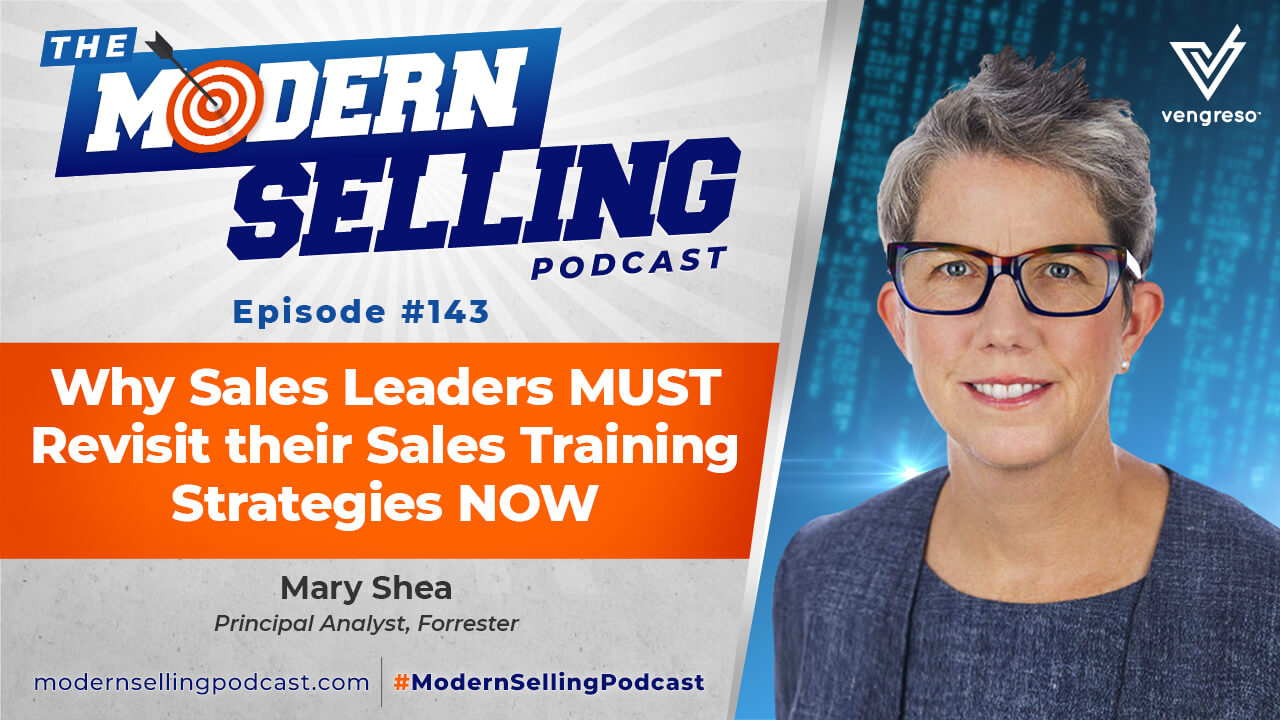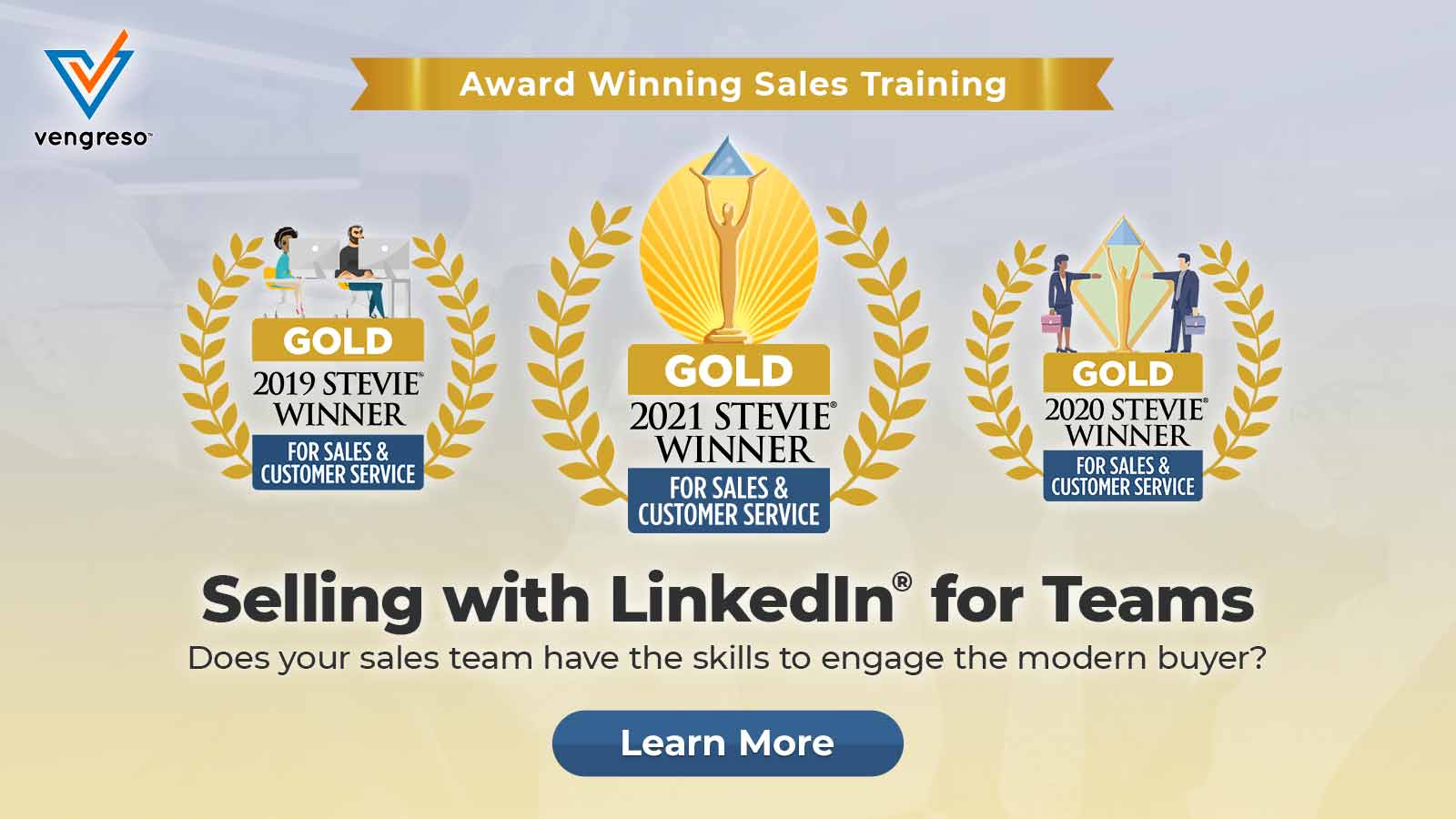Many companies still train their sales reps with outdated methodologies from 20 or 30 years ago. But the modern buyer is very different and reps need modern sales training. To teach skills that will help sellers reach digitally savvy buyers who prefer to do research on their own before engaging with them, organizations must change their sales training strategies and delivery methods.
My guest on this episode is Dr. Mary Shea, Principal Analyst at Forrester. She has been interested in the topic of sales training for many years, both as a salesperson, a sales leader, and now as a researcher. Her research focuses on the empowered B2B modern buyer and how business leaders must adapt, organize, and enable their marketers, sellers, and channel partners to succeed both today and in the future.
Mary helps the world’s leading brands figure out how to adapt their go-to-market strategies to match the expectations of the modern buyer and the modern buying and selling dynamics.
Listen as Mary shares her experience and practical advice for sales leaders.
#SalesLeaders, are your sales #training strategies relevant to today’s modern buyer? Learn how to train sellers to reach the modern buyer on the @GoModernSelling podcast with @GoVengreso CEO, @M_3Jr and @sheaforr of @Forrester. Click To TweetSubscribe to Modern Selling on the App of Your Choice!
NOW is the Time for Sales Leaders to Revisit Their Sales Training Strategies
Mary says that the B2B buyer has changed so much that organizations need to go back and revisit their sales training strategies, whether that’s in-house or outsourced to a provider or a hybrid approach.
Business buyers do more and more research on their own, visiting review sites like TrustRadius and G2 Crowd and consulting their personal networks.
Millennials are now a third of the US workforce and by 2025 they will make up about 45% of the global workforce. These digital natives are very comfortable learning on their own and transacting over the internet without help. And, according to Forrester research, they continue acting more like consumers.
Sales leaders must ask themselves whether or not their sales training program is providing their sellers the skills they need to be successful in a digital world.
Last year, Mary led the research on a Forrester published report detailing the findings of a study of the different types of sales training providers in the market. The report helps companies understand who’s delivering training in modern formats that their employee base will really care about, using language that is appropriate for the 21st century, showing visuals that make sense to today’s salesforce, and using the right sales tools.
Mary says that when COVID-19 came, all the trends she had observed in the market and that she expected to take 24 to 36 months to become mainstream, suddenly accelerated. Now that both sellers and buyers are working from home, companies realize that they cannot reach buyers through old methods. Organizations that didn’t have the right sales training provider in place or haven’t revisited their sales training strategies are scrambling to figure out how they can empower sellers to achieve success in a virtual world.
#SalesLeadership, listen now to the @GoModernSelling podcast as @M_3jr interviews @sheaforr of @Forrester about sales training strategies to help sellers reach the modern buyer. Click To TweetHow to Leverage the Mediums to Engage with the Modern Buyer
Sellers today must learn the skills to communicate with buyers across different channels available to them (phone, chat, social media, etc.). They must understand how to engage effectively and with the right etiquette in all these mediums.
Many sellers still don’t know how to use LinkedIn® correctly, sending InMail messages that are not personalized nor targeted to the right audience, thus wasting opportunities to connect with prospects.
Because of social distancing, it’s not possible to visit clients or meet for a coffee. Sellers must engage with prospects and clients digitally, so they must learn the skills to do it effectively. Sales leaders and sales enablement leaders must provide sellers with these skills to help them achieve success.
Mary says that as we go through the social impact of this pandemic and economic downturn, we will not be going back to anything that looks like the past. Instead, we’ll be carving out a new future for how we do business, how we interact and engage – and digital selling is going to be a critical piece of that. That’s why organizations need to make sure their sellers have the right skills for this new normal.
Are you training your #SalesTeam to meet the demands of the #ModernBuyer? Listen as @M_3Jr interviews @sheaforr of @Forrester on the @GoModernSelling podcast on modern #SalesTraining techniques. Click To TweetHow to Evaluate a Sales Training Program
When evaluating an outside provider or even your in-house trainers, you must pay attention to these two elements:
#1: Delivery Methods
Are they being innovative and assertive in terms of creating new and different ways to deliver the experience? The content should be delivered in different formats and not just in-person or webinar. They should use different platforms, including hands-on training and coaching on how to use tools.
#2: Content Relevance
Does the training relate to the types of challenges and opportunities that your sellers are experiencing now and will experience in the future? The program should go beyond “figuring out how to navigate around the gatekeeper” and address other skills that are more relevant in our current environments, such as engaging prospects on social media and all the different channels where they are. Sellers must know that each channel and social network has different rules of etiquette that they must follow.
Mary also noted that during her research, some sales leaders were disappointed that the language the trainers used didn’t relate to their employee set, that visuals were very dated and awkward, and then even in some cases service providers were delivering bound notebooks at the end of the session instead of digital workbooks.
Listen to the episode to catch all of the great advice Mary shares.
The Role of Technology in Sales Training
The current health crisis has driven most, if not all, sales training online. Virtual Instructor-Led Training is now the norm.
But it’s not enough to move the in-person training to a webinar. Any virtual sales training program must include the seven principles of effective learning. For examples of programs that include those principles, look at Vengreso’s Selling with LinkedIn ® and Selling with Video Virtual Bootcamp.
Outline of This Modern Sales Training Episode
- [2:45] Mary’s career: from practitioner to academic
- [9:56] Why is it crucial for sales leaders to revisit their sales training strategies right now?
- [14:50] What is the impact of COVID-19 on the mindset of sales leaders?
- [17:01] How can you leverage the different mediums to engage with buyers?
- [23:22] How will buyer preferences change after COVID?
- [24:34] What are some criteria to evaluate sales training programs?
- [31:40] What is the role of technology in sales training programs?
- [36:35] How can you engage learners through technology?
- [40:00] Pitfalls to avoid and other tips
- [41:50] Customization & Sales and Marketing Alignment
Resources Mentioned on this Modern Sales Training Episode
- Connect with Mary Shea on LinkedIn®
- Follow Mary on Twitter: @sheaforr
- TrustRadius
- G2
- REPORT: Now Tech: Sales Training And Services, Q1 2020
- Mary Shea’s all-time favorite movie: The Sting
- Modern Marketing Engine Podcast – Bernie Borges
- The Complete Guide to Dreamforce 2022
Connect with Mario!
- www.vengreso.com
- On Facebook
- On Twitter
- On YouTube
- On LinkedIn
Subscribe to Modern Selling on the App of Your Choice!



